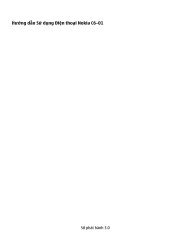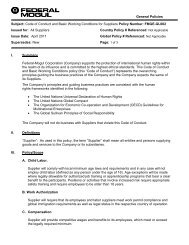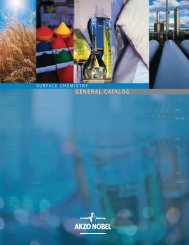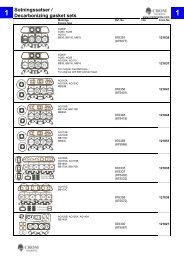Create successful ePaper yourself
Turn your PDF publications into a flip-book with our unique Google optimized e-Paper software.
A<br />
ENGINEERING<br />
Spring-Loaded Mountings<br />
For high-speed applications, radial and axial rigidity and smooth<br />
spindle per<strong>for</strong>mance may be obtained by spring-loading the ball<br />
bearings with a predetermined axial load. Spring-loading allows<br />
the spindle to float laterally during temperature changes without<br />
appreciably increasing or decreasing the original spring axial<br />
load.<br />
As the inner ring heats up during operation, it expands radially. This<br />
radial expansion applies an increasing load through the ball and<br />
outer ring and finally to the preload springs. The preload springs<br />
deflect slightly to compensate <strong>for</strong> the loads due to thermal expansion<br />
and maintain a consistent load on the spindle system.<br />
In some applications, single, spring-loaded bearings are employed at<br />
the front and rear locations, mounted in back-to-back arrangement.<br />
Other mountings, similarly spring-loaded, have a pair of bearings<br />
installed in tandem at each end of the spindle in back-to-back<br />
arrangement (DT-DB). In either case, the spring pressure is applied<br />
to the pulley-end or rear bearing position, placing the shaft in tension<br />
between the two bearing locations.<br />
High Points of Runout<br />
The correct use of the high point of runout etched on the bearing<br />
components allows the accuracy of the spindle to be optimized. The<br />
components should be mounted in the housing and on the spindle<br />
so that the high points are aligned with each other. In other words,<br />
the inner ring is fitted on the spindle so the high point of the rear<br />
ring is aligned with the high point of the nose bearing. Similarly, the<br />
high points of the outer ring are aligned in the housing.<br />
To obtain maximum precision, and when the high points of runout<br />
of both the spindle and the housing are known, the respective high<br />
points of the bearing components should be 180 degrees opposite<br />
to those of the spindle and the housing. This will tend to neutralize<br />
the eccentricity and minimize the effect of the high spots of all<br />
components. The figures to the right show typical examples of the<br />
correct and incorrect use of the high point of runout of bearings.<br />
The greatest accuracy can be provided by grinding the spindle nose<br />
after the bearings are installed. This procedure will produce spindle<br />
runout considerably smaller than the bearing runout.<br />
Correct: high points of runout in line.<br />
Incorrect: high points of runout not in line.<br />
Correct: bearing having largest runout at rear.<br />
High points of runout in line.<br />
Incorrect: bearing having largest runout at rear.<br />
High points of runout not in line.<br />
Incorrect: bearing having largest runout at nose.<br />
High points of runout in line.<br />
Fig. 92. The effect of bearing<br />
runout high point locations<br />
on spindle accuracy.<br />
Incorrect: bearing having largest runout at nose.<br />
High points of runout not in line.<br />
100 TIMKEN MACHINE TOOL CATALOG







